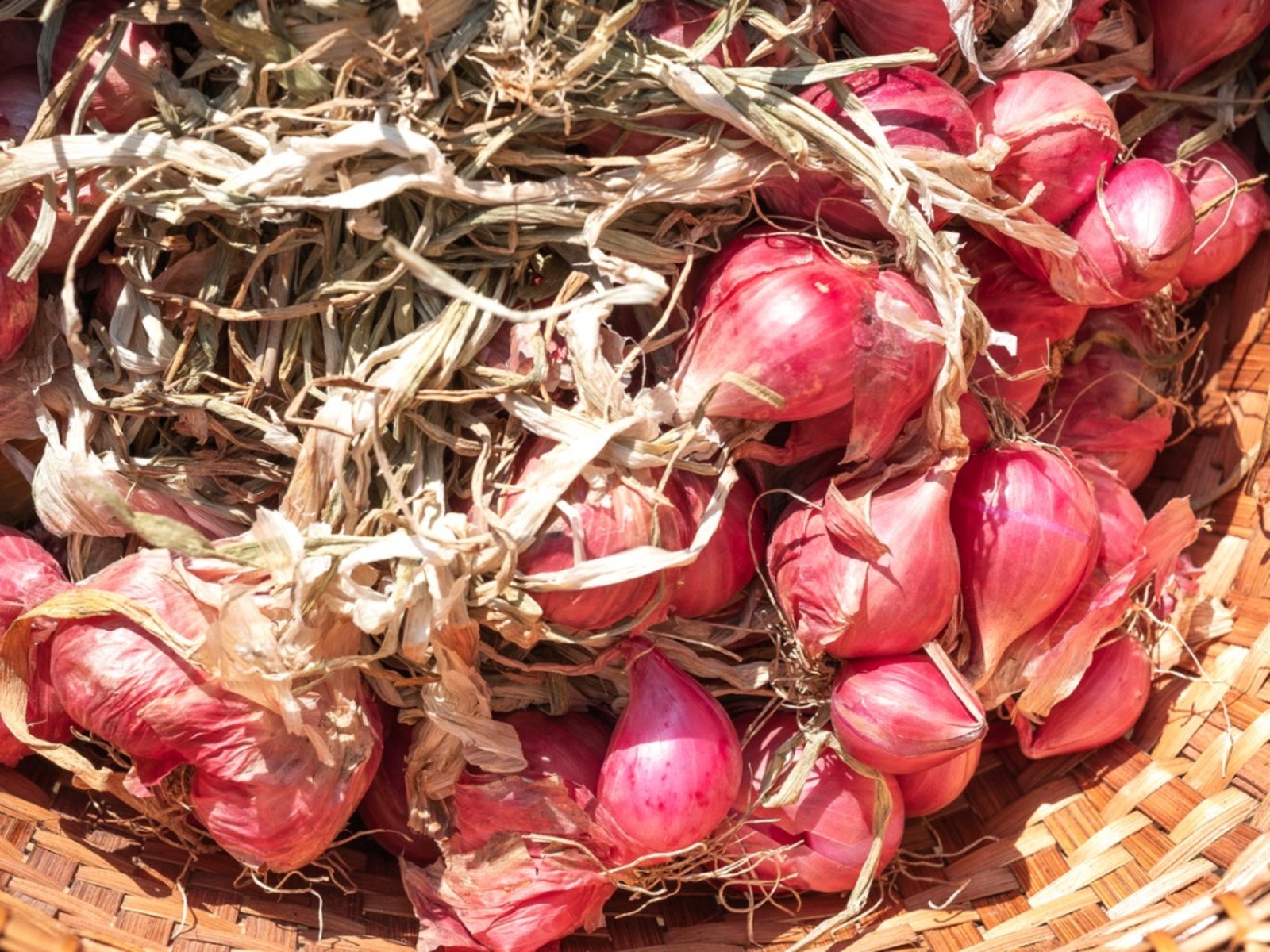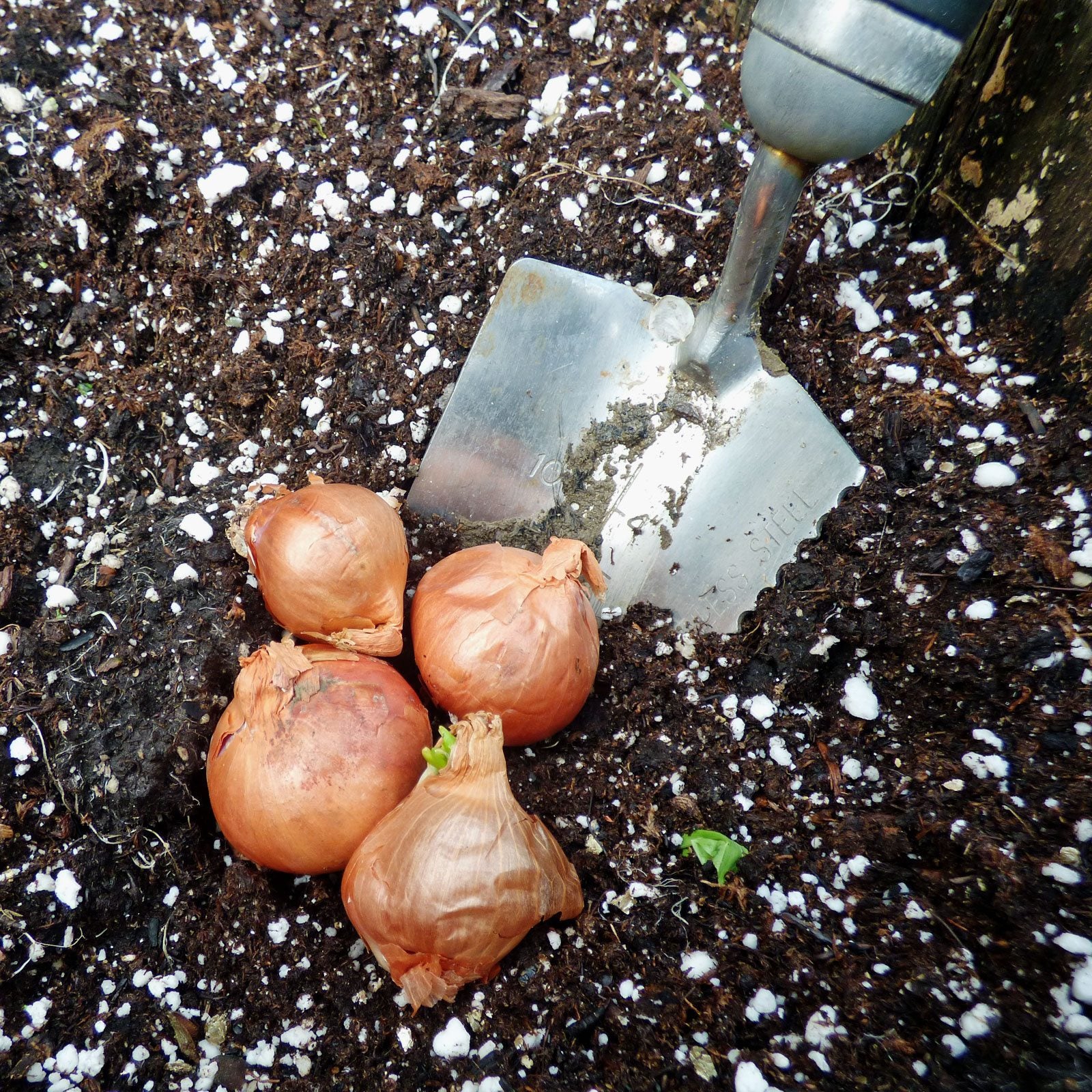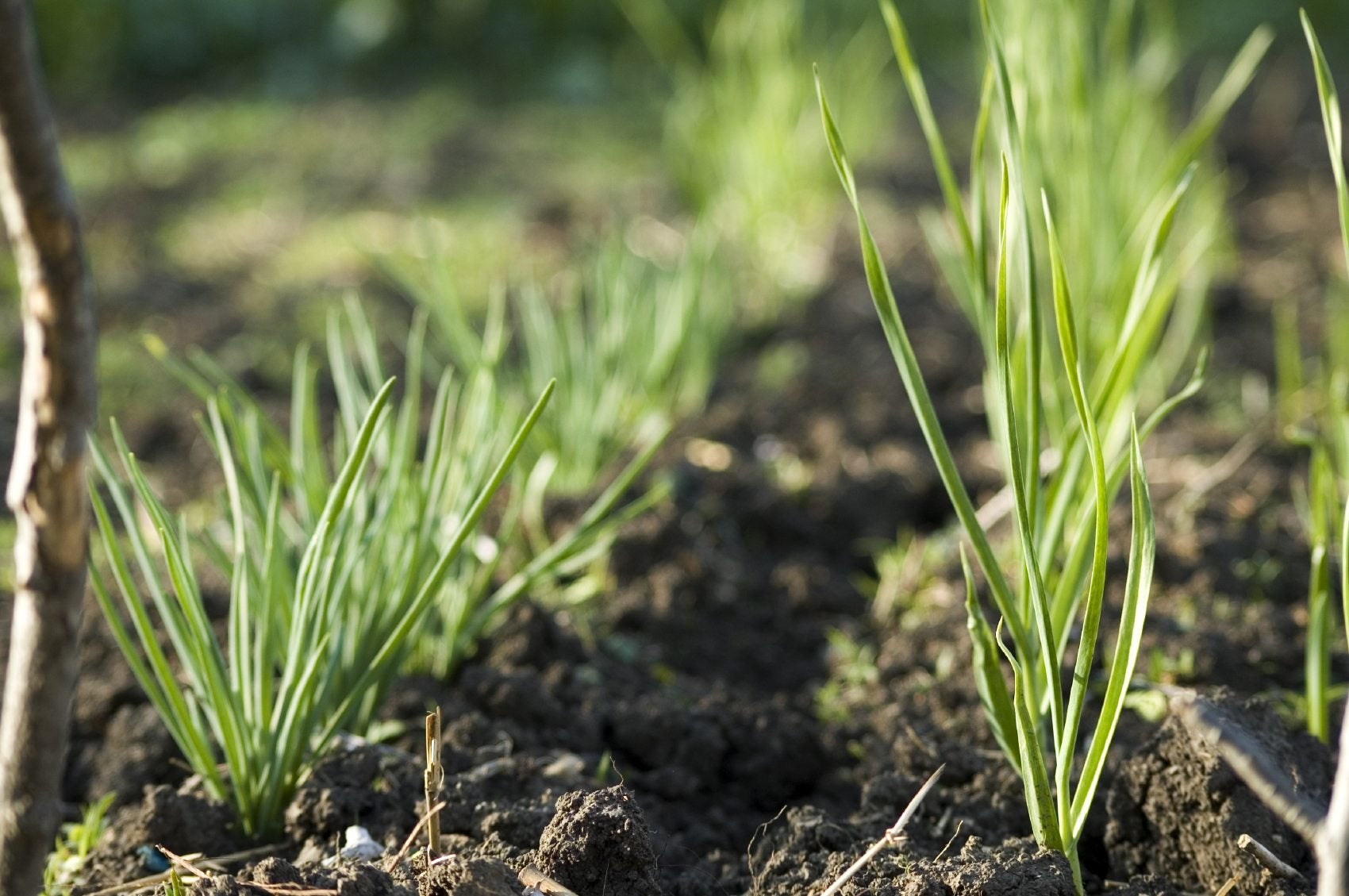Harvesting Shallots: When Is It Time To Harvest A Shallot Plant

Many people think of shallots as a type of onion; however, they are their own species. Shallots grow in clusters and have a textured, copper-colored skin. Shallots are mild-flavored and taste like a combination between an onion and garlic. To get the most of your shallot crop, it's important to know the best time for harvesting shallots in the garden. Keep reading to learn how to harvest shallots.
Growing Shallots
Shallots prefer soil that drains well and has a high composition of organic matter. The best soil pH for shallots are 6.3 to 6.8. Keeping shallot beds free of weeds is essential to good development and helps with shallot picking once the time to harvest a shallot plant arrives.
Shallots are grown from sets as well as transplants. Shallot plants benefit from a regular feeding of organic fertilizer. The root system of shallot plants is extremely shallow and the plants need consistent water in order to thrive.
When to Harvest Shallots
Some people have a difficult time knowing when to harvest shallots. Both the plant tops and the bulbs can be eaten, so the time to harvest a shallot plant depends on the part you will be using.
The tops can be harvested within 30 days and are commonly used in soups, salads, and stews.
The bulbs will take around 90 days to mature. Shallot bulb picking should begin when the greens of the plant start to wither, fall over, and die. They will turn brown and become droopy, while the bulbs will protrude from the soil and the outer skin becomes papery. This usually happens in mid to late summer.
How to Harvest Shallots
When it is time to harvest a shallot plant bulb, dig the bulbs, shake off the dirt, braid the tops, and let them dry.
Gardening tips, videos, info and more delivered right to your inbox!
Sign up for the Gardening Know How newsletter today and receive a free copy of our e-book "How to Grow Delicious Tomatoes".
Use a digging fork to gently lift the entire clump out of the ground and gently shake off the soil. Allow the bulbs to dry out some in the garden for about a week or so, weather permitting. You can also store them in mesh bags in a cool and dry location.
-
 Looking For Plants To Give You The Soft And Fuzzies? Try These 5 Fuzzy Leaf Plant Options
Looking For Plants To Give You The Soft And Fuzzies? Try These 5 Fuzzy Leaf Plant OptionsLovers of texture, drama, silver foliage and tactile plants will adore these special sensory garden additions. These fuzzy leaf plant options will leave you all aglow
By Susan Albert
-
 Get Ready For A Summer Of Hummers! Grow These Full Sun Hummingbird Plants and Flowers
Get Ready For A Summer Of Hummers! Grow These Full Sun Hummingbird Plants and FlowersIf you’re lucky enough to enjoy a sunny backyard, make sure you are maxing out on your pollinator opportunities and grow these full sun hummingbird plants and flowers
By Tonya Barnett
-
 Tips For Growing Shallots That Are Disease And Pest Free
Tips For Growing Shallots That Are Disease And Pest FreeShallots are interchangeable with onions in cooking, but need a bit of attention in the garden. Read about what to watch for.
By Laura Miller
-
 My Shallots Are Flowering: Are Bolted Shallot Plants Okay To Use
My Shallots Are Flowering: Are Bolted Shallot Plants Okay To UseShallots are easy to grow; however, you may still end up with bolted shallot plants. What causes shallots to bolt? Find out in this article.
By Amy Grant
-
 Planting Shallot Sets: How To Grow Shallot Sets
Planting Shallot Sets: How To Grow Shallot SetsShallots grow easily in the kitchen garden, either by seed or more often grown from sets. Planting your own shallot sets is a cost effective way to enjoy them. Ok, so what are shallot sets? Read here to learn more.
By Amy Grant
-
 Tips For Growing Shallots
Tips For Growing ShallotsOne of the easiest members of the onion family to grow, shallots mature faster and require less space than their counterparts. Growing shallots in your garden is very easy. Look at how to grow shallots in this article.
By Nikki Tilley